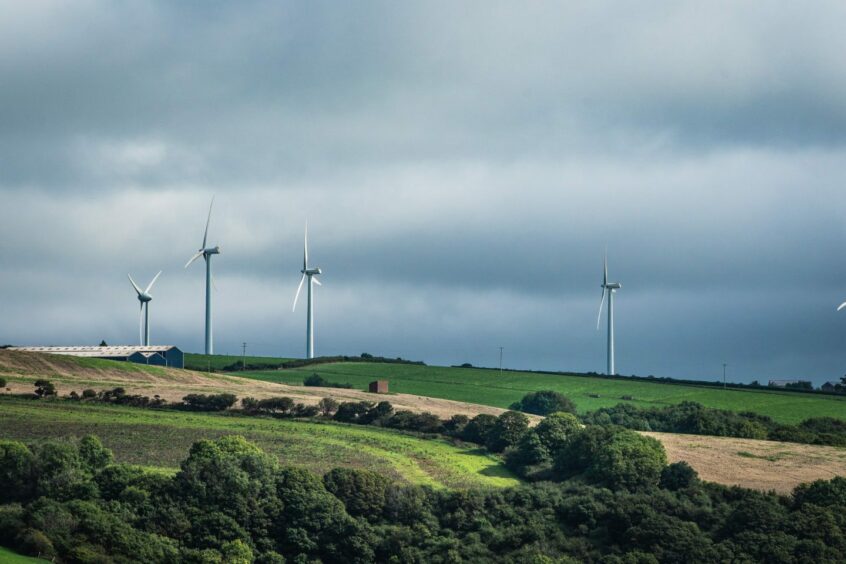 © Supplied by Welsh Government
© Supplied by Welsh Government Onshore wind and solar developer Bute Energy has warned that numerous planning barriers are preventing growth in the Welsh renewable energy sector.
It added that the current government should intervene to solve ongoing problems in the industry related to the supply chain, skills shortages, grid connections and obstructions to the current consenting process.
Comments by Bute Energy were made following a visit to the Brechfa Forest wind farm by prime minister Kier Starmer and first minister Eluned Morgan on August 20.
A spokesperson for the company said that while “Bute Energy welcomes the Welsh and UK Governments’ investment in onshore wind” the government needed to “ensure the planning system has the capacity and resources to give consent to new projects and get Britain building”.
According to Bute Energy, emerging problems such as delays at Planning and Environment Decisions Wales (PEDW) – such as six-month hold-ups to new applications for Developments of National Significance – showed that new legislation needed to be put in place to keep development “on track” and allow the country to “meet national targets”.
Bute Energy noted that its 2GW onshore wind portfolio – worth £3bn – showed what the sector could achieve if given the right tools.
Previous reports
RenewableUK Cymru released a report supporting Bute Energy’s concerns in 2023, highlighting that Wales would only be able to reach its potential of 9GW of energy over the next decade if an “ambitious” delivery plan was introduced immediately with “enabling actions” put in place.
So far, the company has predicted that renewable energy deployment rates must increase by up to four times in the next 10 years to achieve Welsh government targets pushing for 100% renewables by 2035.
This is expected to come primarily from onshore and offshore wind, with solar, hydro and tidal making up the rest of the share.
Commenting on the findings at the time, RenewableUK Cymru director Jess Hooper said: “Wind power is the backbone of Wales’ net zero ambitions, yet the evidence suggests not enough is being done to nurture the growth of that critical backbone. As a result, Wales risks falling short of its power generation need by 2035.”
She continued to highlight that poor grid connectivity and an inconsistent and under-resourced planning system had been the primary factors in slowing progress and deterring developers from “pursuing the ambitious wind energy projects our country so desperately needs to succeed”.
Slow progress
In the face of negative predictions, the Welsh Government has moved to tackle the issues presented. Hooper added that Wales was seeing more positive policy developments, such as the introduction of the Infrastructure (Wales) Bill in 2025 – legislation that aims to consolidate the planning process.
Another facet of the Infrastructure (Wales) Bill in 2025 sees it tackle planning and consenting for large scale wind projects both onshore and offshore – currently undertaken through different regimes – by consolidating control over the process.
As of 2023 however, delivery timescales for onshore wind projects have remained slow – with one onshore 25.2MW wind farm at Upper Ogmore taking two years to get approval.
Other methods employed by the government to help grow the industry include meeting with European wind industry heads.
One such meeting was held this year in Brussels in February including previous Welsh first minister Mark Drakeford, WindEurope CEO Giles Dickson and Manon Kynaston – assistant director of RenewableUK Cymru – along with additional European wind industry representatives. Talks included discussions around the state of Welsh wind energy in 2024, as well as plans for current and future development.
WindEurope CEO Giles Dickson said regarding the meeting that “The Welsh Government has a great vision for the build-out of onshore wind and the development of floating wind in the Celtic Sea. This offers huge opportunities for local industry too, including steel and ports.”
